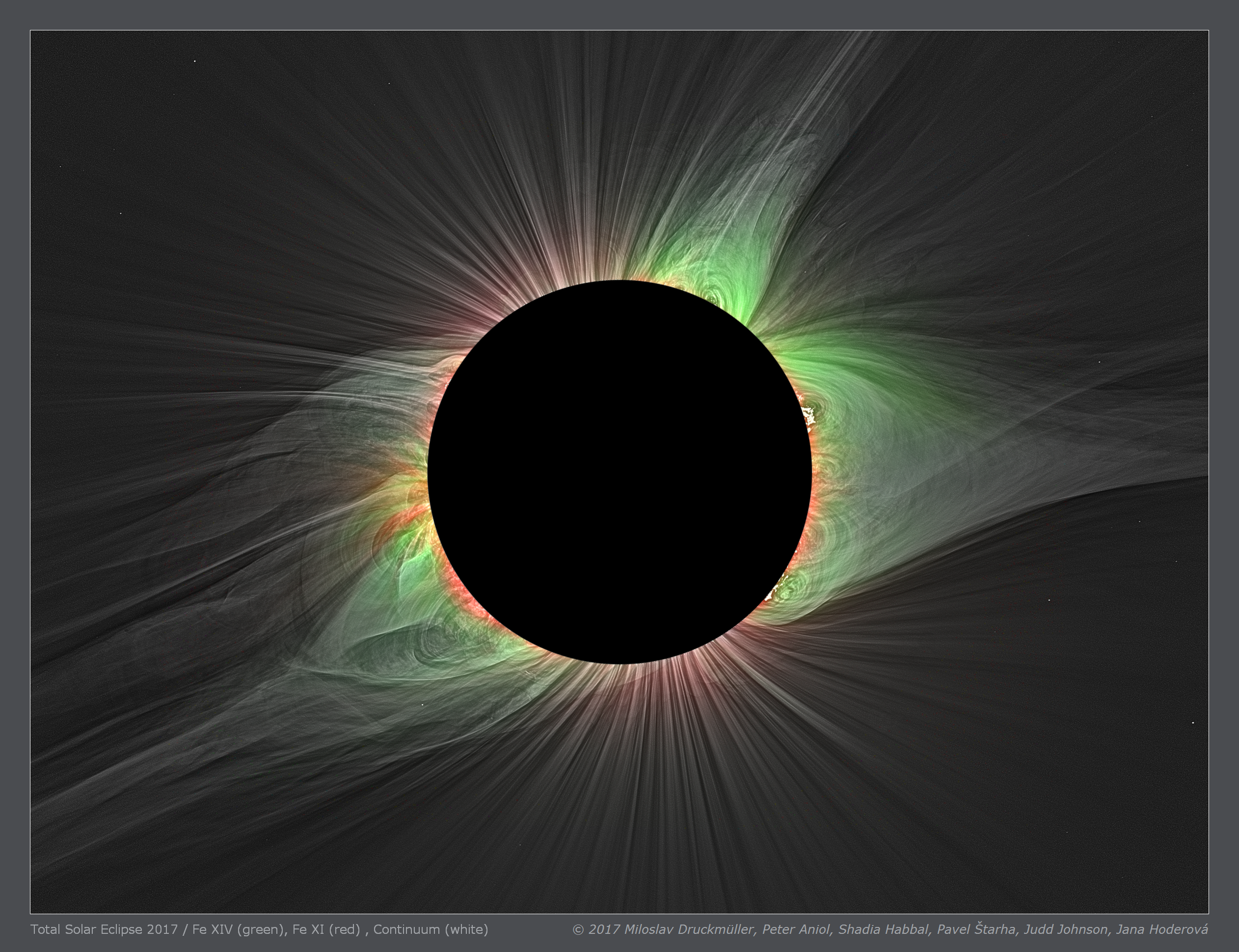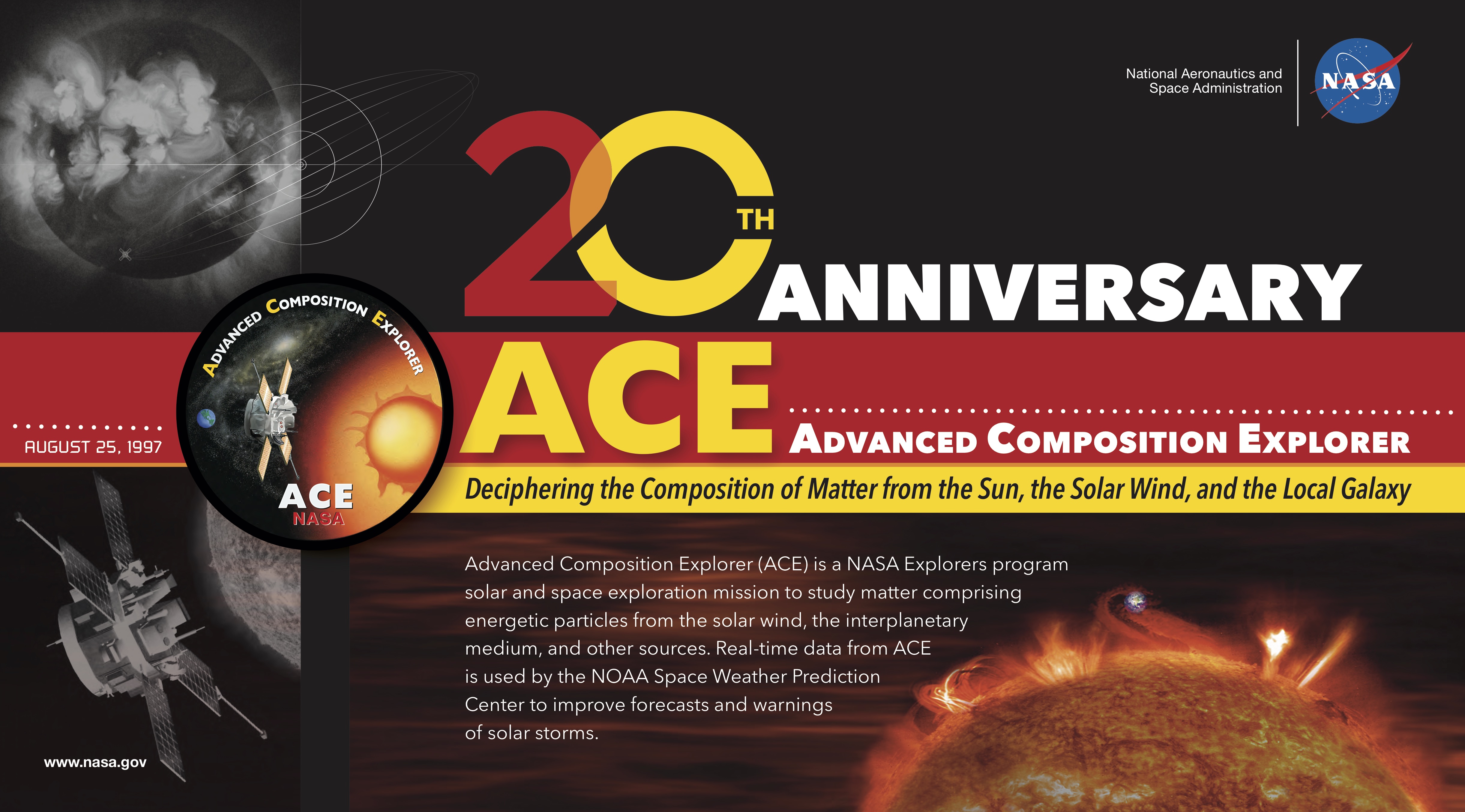ACE
Advanced Composition Explorer

NASA's Advanced Composition Explorer (ACE) collects and analyzes particles of solar, interplanetary, interstellar, and galactic origins. The data contributes to our understanding of the Sun, its interaction with Earth, and the evolution of the solar system.
- ACE continues to provide space weather reports and warnings of geomagnetic storms that can disrupt communications on Earth and harm astronauts in space.
- The spacecraft has operated far beyond its expected lifetime.
| Nation | United States of America (USA) |
| Objective(s) | Sun–Earth L1 Lagrange Point |
| Spacecraft | ACE |
| Spacecraft Mass | 1,658 pound (752 kilograms) |
| Mission Design and Management | NASA / GSFC |
| Launch Vehicle | Delta 7920-8 (no. D247) |
| Launch Date and Time | Aug. 25, 1997 / 14:39 UT |
| Launch Site | Cape Canaveral, Florida / Launch Complex 17A |
| Scientific Instruments | 1. Solar Wind Ion Mass Spectrometer (SWIMS) 2. Solar Wind Ion Composition Spectrometer (SWICS) 3. Ultra-Low Energy Isotope Spectrometer (ULEIS) 4. Solar Energetic Particle Ionic Charge Analyzer (SEPICA) 5. Solar Isotope Spectrometer (SIS) 6. Cosmic Ray Isotope Spectrometer (CRIS) 7. Solar Wind Electron, Proton, and Alpha Monitor (SWEPAM) 8. Electron, Proton, and Alpha-Particle Monitor (EPAM) 9. Magnetometer (MAG) |
Key Dates
Aug. 25, 1997: Launch
Jan. 21, 1998: Spacecraft began operations
In Depth: ACE
NASA's Advanced Composition Explorer (ACE) spacecraft was designed to study spaceborne energetic particles from the Sun-Earth L1 Lagrange point, about 870,000 miles (1.4 million kilometers) from Earth.
Specifically, the spacecraft was launched to investigate the matter ejected from the Sun to establish the commonality and interaction between the Sun, Earth, and the Milky Way galaxy.
In addition, ACE also provides real-time space weather data and advanced warning of geomagnetic storms. ACE’s nine instruments have a collecting power that is 10 to 10,000 times greater than anything previously flown.
After launch, the spacecraft’s Delta 2 launch vehicle’s second stage reignited after four hours to insert the satellite into a 110 × 851,000-mile (177 × 1.37 million-kilometer) orbit.
After reaching apogee after launch, ACE inserted itself into its Lissajous orbit around the L1 point. The spacecraft was declared operational Jan. 21, 1998.
As of 2015, it continued to provide near-real-time 24/7 coverage of solar wind parameters and to measure solar energetic particle intensities.
With the exception of the SEPICA instrument (data from which was no longer received after Feb. 4, 2005), all instruments on ACE remain operational.
Additional Resources
ACE Real-Time Solar Wind Data – NOAA Space Weather Prediction Center
National Space Science Data Center Master Catalog: ACE
Key Source
Siddiqi, Asif A. Beyond Earth: A Chronicle of Deep Space Exploration, 1958-2016. NASA History Program Office, 2018.































